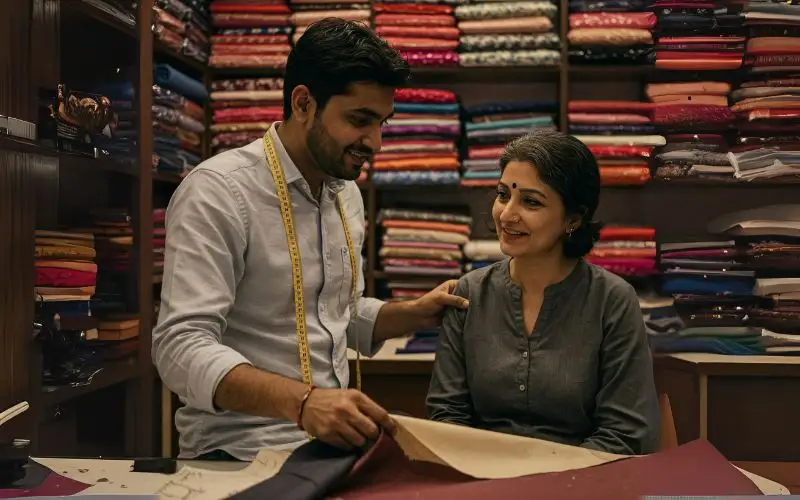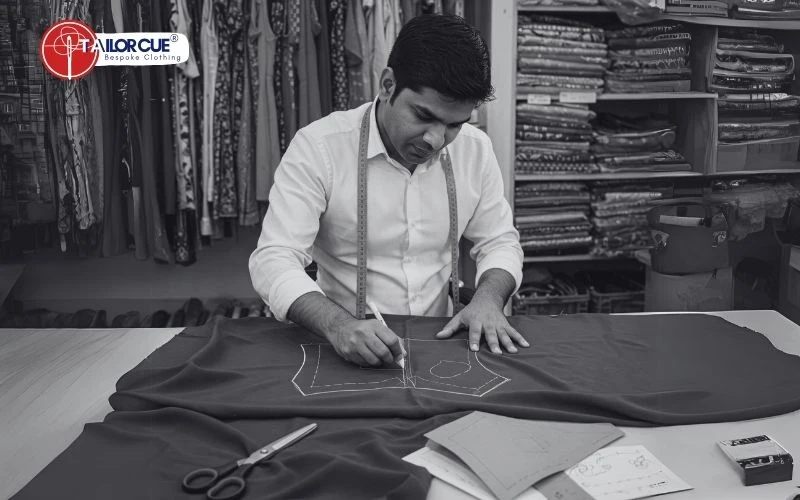Let’s face it, sewing isn’t just about stitching fabric together—it’s an art form. It’s the magic of turning a flat piece of cloth into something you can wear, strut in, and feel like a million bucks. And when it comes to creating a bespoke blouse? That’s where the real fun begins. This isn’t just a DIY project; it’s your backstage pass to becoming a sartorial wizard. So, grab your tools, and let’s dive into the nitty-gritty of crafting a blouse that’s as unique as you xare.
What You’ll Need to Get Started Stitching a Blouse for Yourself
First things first, you can’t create a masterpiece without the right tools. Think of these as your fashion superhero gadgets—each one has a specific job, and together, they’re unstoppable.
1. The Sewing Machine: Your MVP
Forget that basic machine you’ve had since high school. We’re talking about a real workhorse here. Look for one with adjustable stitches, a killer buttonhole function, and maybe even a knee lift. If you’re feeling fancy, throw in an overlock machine for those pro-level finishes. Trust me, your seams will thank you.
2. Thread
Thread might seem boring, but it’s the glue holding your masterpiece together. Splurge on high-quality threads—cotton, polyester, silk, whatever suits your design the most. Just make sure it matches your fabric. Oh, and keep it away from sunlight and dust. Threads are divas; they need proper care.

3. Fabric: The Star of the Show
This is where the magic begins. Choose your fabric like you’re casting the lead in a blockbuster movie. Cotton? Linen? Silk? Each one brings its own vibe. And don’t forget to pre-wash it—nothing ruins a blouse faster than unexpected shrinkage.
Blouse fabrics define an outfit’s look and feel. Cotton is perfect for casual, breathable designs, ideal for block prints, embroidery, and relaxed styles. It pairs easily with jeans or skirts and is machine washable. Linen offers a crisp texture for tailored or minimalist blouses, great for smart-casual occasions, though it wrinkles easily and needs gentle care. Silk exudes elegance, perfect for draped or embellished blouses suited for formal events, but requires hand washing or dry cleaning. Rayon and polyester blends are versatile, wrinkle-resistant, and mimic silk at a lower cost, working for both flowy and structured designs. For grand occasions, velvet and brocade make a statement with their rich textures and intricate patterns, though they demand dry cleaning. The best fabric depends on the occasion, design, and maintenance preference.
4. Fabric Scissors
Cheap scissors are a no-go. Invest in a pair of professional shears and treat them like royalty. Keep them sharp, keep them clean, and for the love of fashion, only use them on fabric. Paper is their mortal enemy.
5. Pins and Needles
Not all pins are created equal. Silk pins are your best friends for delicate fabrics, and ballpoint needles are a must for knits. And don’t skimp on hand-sewing needles—you’ll need a variety for different tasks. Think of them as your sewing squad.
A variety pack of hand-sewing needles is not merely ‘useful,’ it is essential for the nuanced details that elevate bespoke work. Sharps for general sewing, embroidery needles for delicate work, beading needles for intricate embellishment – each serves a specific purpose in the tailor’s repertoire.
6. Measuring Tape
A flexible, non-stretch measuring tape is your bestie. Accuracy is everything here. If you’re feeling extra, grab a tailor’s curved ruler for those tricky arm and hip curves. Precision is the name of the game.
7. Iron and Ironing Board
Pressing is just as important as sewing. A good steam iron and a sturdy ironing board are non-negotiable. And don’t forget a pressing cloth—delicate fabrics are high-maintenance, and we’re here to keep them happy.
8. Seam Ripper
Mistakes happen. A sharp seam ripper is your go-to for fixing them. But it’s not just for errors—it’s also your tool for refining and perfecting. Think of it as your fashion eraser.
9. Pattern Paper
Sturdy pattern paper is your canvas. Use it to draft your designs, and don’t be afraid to experiment. A pattern-making ruler can help you nail those tricky curves and angles.
10. Embellishments
Beads, sequins, lace—this is where you get to play. Choose embellishments that complement your design without stealing the show. Less is more, unless more is exactly what you’re going for.

From Sketch to Stitch: The Tailor’s Playbook
1. Sketching: Dream It, Then Make It
Start with a sketch. This is your chance to play fashion designer. Study body types, experiment with silhouettes, and don’t be afraid to get creative. Use design software if you’re tech-savvy, or go old-school with pencil and paper. Draping fabric on a dress form can also help you visualize how your design will come to life.
2. Necklines: The Frame for Your Masterpiece
Necklines are like the opening line of a great novel—they set the tone. Experiment with bias-bound necklines for a soft, elegant look, or go bold with a collared design. The neckline is your chance to make a statement, so make it count.
3. Sleeves:
Sleeves can make or break a blouse. From sleek set-in sleeves to dramatic bishop sleeves, the options are endless. Play with shapes and gathers to create a look that’s uniquely yours.
4. Back Closures: Function Meets Fashion
Back closures are more than just practical—they’re an opportunity to add a touch of flair. Invisible zippers, button loops, or even a lace-up design can take your blouse to the next level.
5. Pattern Drafting
This is where the magic happens. Drafting a pattern is like creating a roadmap for your blouse. Learn to work with your measurements and adjust for different body types. It’s a skill that takes practice, but once you’ve got it, the possibilities are endless.
The Art of Construction: Stitching It All Together
1. Measurements
Accuracy is everything. Take your time with measurements, and don’t forget to account for ease of movement. A well-fitting blouse starts with precise numbers.
2. Seams
Choose your seams wisely. French seams for delicate fabrics, flat-felled seams for durability—each type has its purpose. And don’t forget to press as you go. A well-pressed seam is a thing of beauty.
3. Interfacing
Interfacing gives your blouse structure and shape. Choose the right type for your fabric, and don’t be afraid to experiment. It’s the unsung hero of tailoring.
4. Finishing Touches
Understitching, topstitching, and edge finishing are the hallmarks of a professional finish. These little details might seem small, but they make a world of difference.
The Fun Part: Embellishments and Personalization
This is where you get to let your creativity run wild. Add embroidery, lace, or even a few well-placed sequins. The key is balance—let your embellishments enhance your design, not overpower it. And don’t forget to add a personal touch, like a monogram or hand-painted detail. This is your chance to make your blouse truly one-of-a-kind.
Sewing Is Your Superpower
Creating a bespoke blouse is more than just sewing—it’s a journey. It’s about taking a piece of fabric and turning it into something that reflects your personality, your style, and your creativity. So, grab your tools, embrace the process, and remember: practice makes perfect. Now go forth and create something amazing. Your wardrobe (and your inner fashionista) will thank you.
If stitching a blouse yourself feels overwhelming amidst your busy schedule as an independent woman, and you happen to be from Delhi NCR, let TailorCue simplify it for you! Our expert blouse stitching services are designed to save you time and effort while delivering perfectly tailored blouses that match your style. Book your appointment with us today and experience hassle-free, professional stitching crafted just for you!
